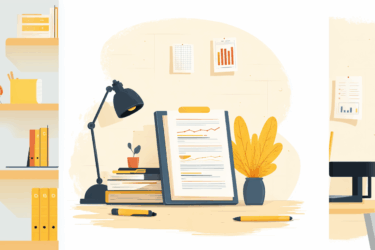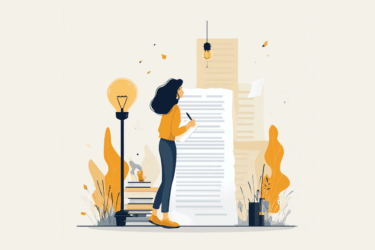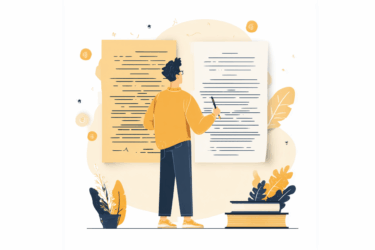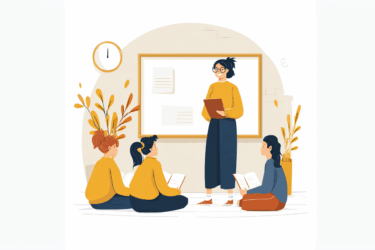Plagiarism occurs when someone uses information from a certain source, and then passes the work for their own unique efforts without acknowledging the original author’s contribution. No wonder such behavior is considered a serious offense in academic and professional environments; the situation even sounds unfair and unethical. Moreover, when it comes to business, a plagiarism check has become a required step to ensure originality, as plagiarism comes with numerous repercussions and puts not only the plagiarizer but the whole company at risk.
Types of plagiarism in the workspace
- Plagiarism is typically associated with text content and academic environment but can be faced at work. When it comes to writing, producing original content is critical, and failing to do so affects the whole business: imagine a serious company publishing stolen content on its official website. The same goes for speech writing, or literally any text produced for business purposes.
- Plagiarism also concerns the visual content, pictures, and images, as stealing ideas or even taking the photos for commercial usage without permission is a severe violation of professional ethics and legal rules.
- Plagiarism in marketing and other data-driven domains often refers to statistics, research, and other information, that takes effort to gain and impacts the major decisions, so can’t be used by other businesses or employees as common knowledge.
- Plagiarism within a company is also a problem, When workers take ideas from one another passing them for their own, it breaks the trust in the team, creates unhealthy competition, and harms the productivity and the success of the whole business.
Consequences of plagiarism at work
- Jeopardized reputation. At the very least, the coworkers and the company decision-makers lose trust in the person who committed such an offense. In the worst-case scenario, plagiarism causes a long-term effect on the career, making it difficult to find a new job, get a promotion, and gain success.
- Job loss. Depending on the scale of the case, the employee who plagiarized can be fired from the company. In academia, the cheater also faces severe repercussions, from failing the course to expulsion from the university without the right to return to the program.
- Legal actions. Normally, plagiarising is not a criminal offense. But in some cases, it can entail legal repercussions, hence the time, energy, and money losses, as the compensation often includes paying for the financial and mental damage caused to the author by stealing their work.
- Consequences for the company. Plagiarism affects not only the offender. Once dealing on behalf of the company, the plagiarizer puts the brand name at risk and causes potential financial and reputational losses for the whole business.
Why plagiarism in the workspace occurs & how to prevent it
- Lack of awareness. Many people are unaware of attribution importance and won’t distinguish between paraphrasing and synonymization. Hence, they can plagiarize with no malicious intention, still causing drastic consequences for business. Solution: educating employees on plagiarism issues and the consequences of irresponsible behavior on originality matters. Conducting workshops, implementing clear guidelines, and issuing educational materials, as well as hiring an editor to check the materials can help prevent potential problems.
- Accidental copying. Sometimes plagiarism occurs out of pure coincidence! Employees may take attribution-required information for common knowledge or even their novel ideas, or it just happens that the same concept comes to several bright minds. So, the author of the text repeats already published material without even realizing it. Solution: introducing plagiarism-checking tools as a compulsory step in a content-creating process will safeguard the employees from critical mistakes, and protect the company’s image. Making scanning for similarities part of the working routine also decreases the pressure and alleviates the stress, since instead of “looking for a problem” plagiarism prevention tool becomes a way to double-check and polish the text.
- AI plagiarism. Chatbots are fantastic tools for creativity boost and professional writing. However, they are not always utilized ethically, causing problems when AI-generated text is passed for a human-written, and only a reliable AI detector can tell the difference (still, AI-generated content affects website ranking and other crucial parameters.) Moreover, using AI tools can cause plagiarism, as chatbots accumulate data from the Internet, and can generate output containing similarities with other sources–obviously, without any attribution. Solution: raising awareness about the ecological use of AI. Leading workshops on AI-empowered creative writing, issuing strict guidelines regarding the extent to which AI can be used in the workspace, and implementing AI and plagiarism detectors into the company’s workflow.
- Poor paraphrasing or citing. Often, the author of the text knows that they can’t copy from others, but believe that changing the word order and replacing a couple of expressions with synonyms is enough to make the text original. Spoiler: it’s not. Only individual contribution, quality paraphrasing of the source data plus correct attribution of all the information taken from sources ensure one steer clear of any plagiarism-related problems. Solution: shaping a supportive environment where employees feel free to express themselves and make mistakes rather than copying from others and panicking under deadline pressure. Providing creative writing mentorship, and setting guidelines regarding the originality requirements.
Whatever challenges in the workplace you face, plagiarism detection is an essential step to ensure originality and honesty. Join us now to try our solutions for businesses and individuals!






